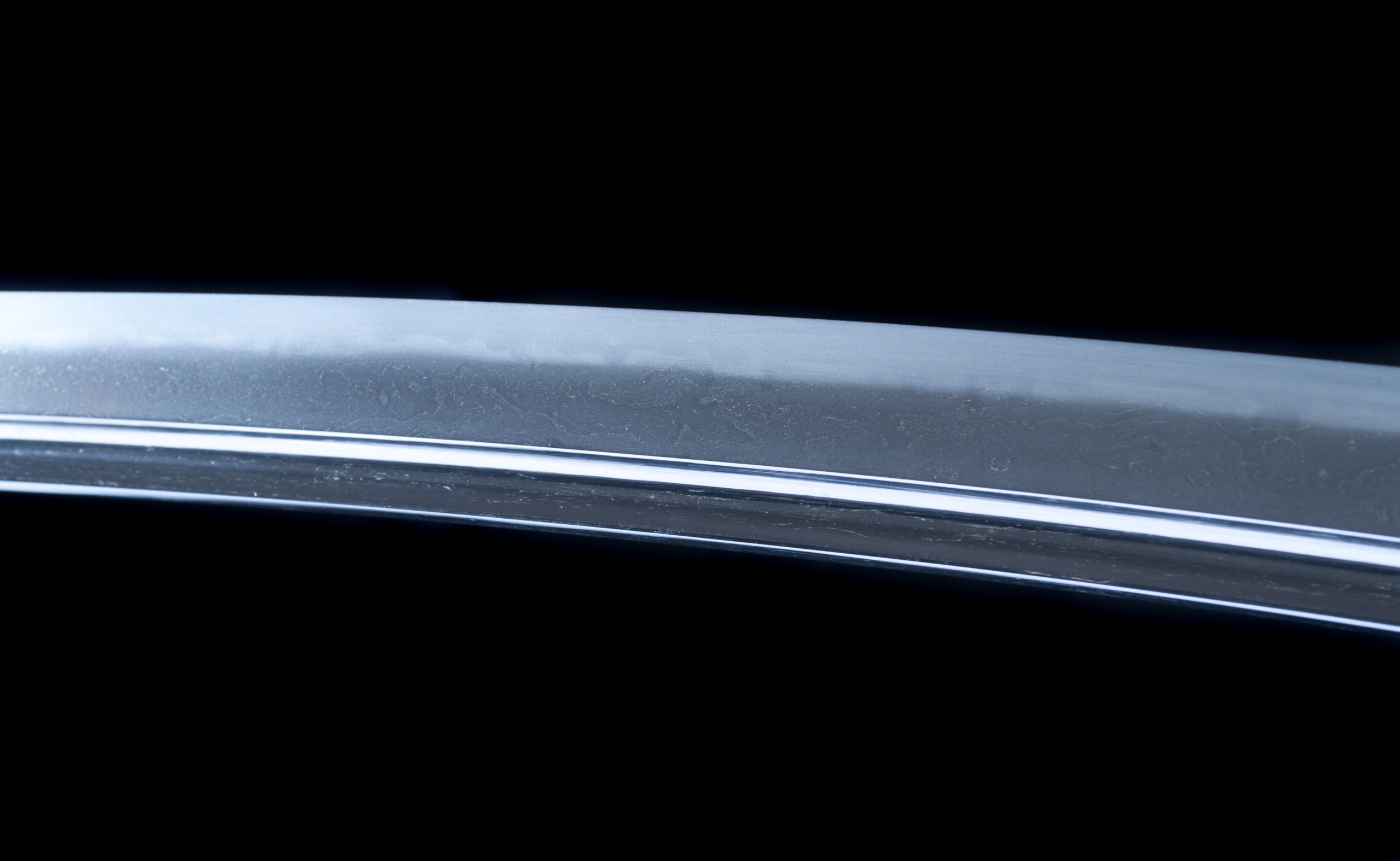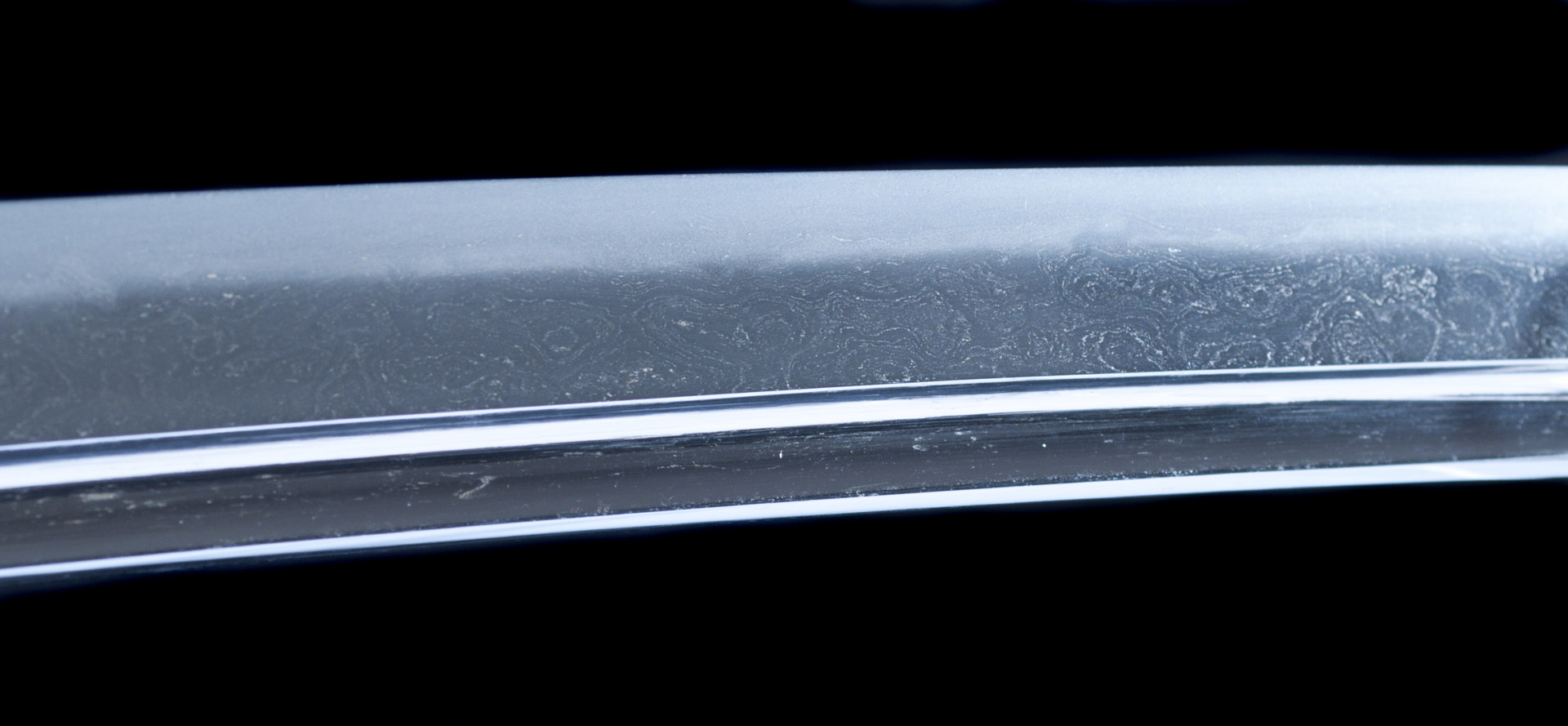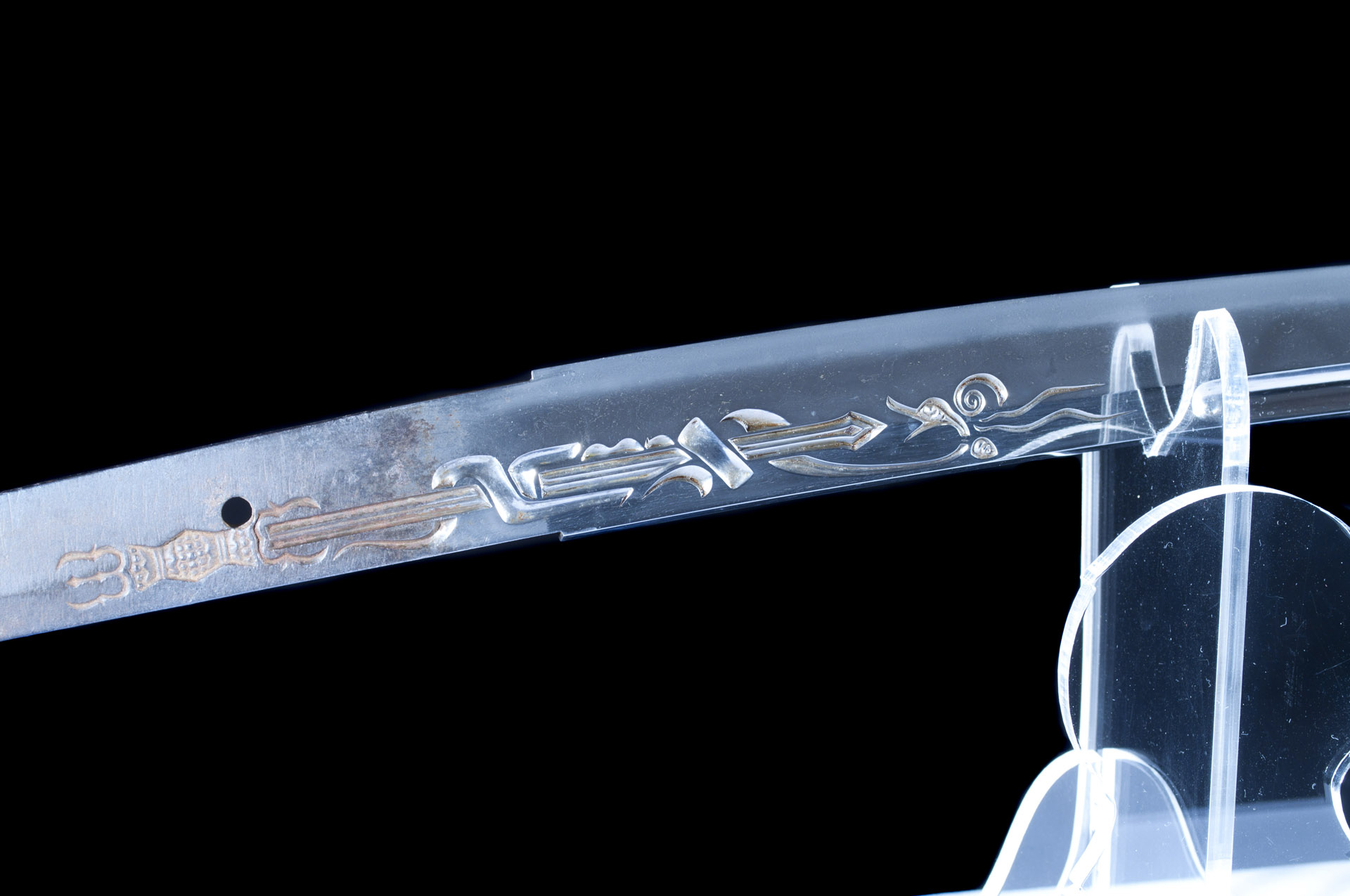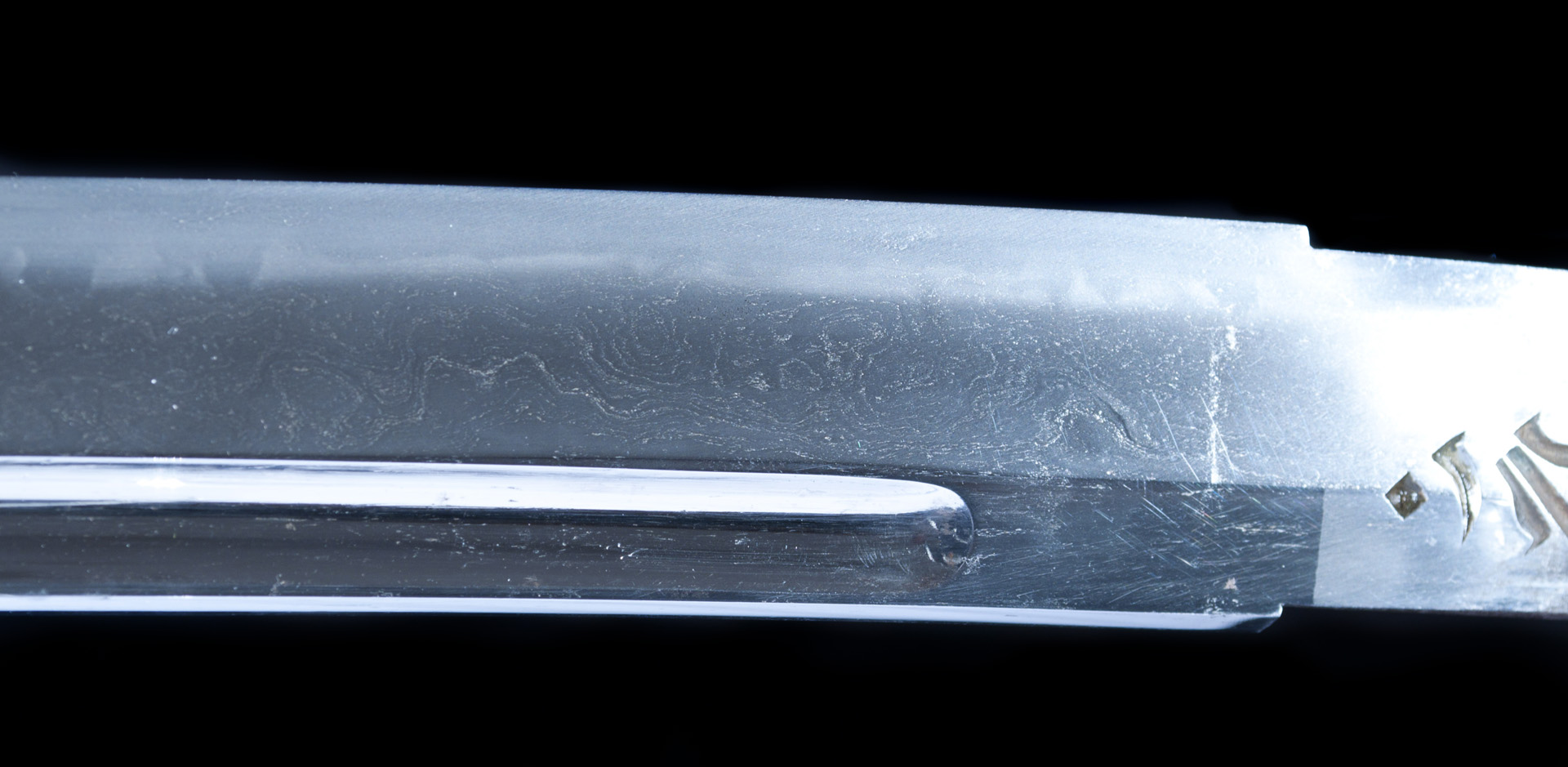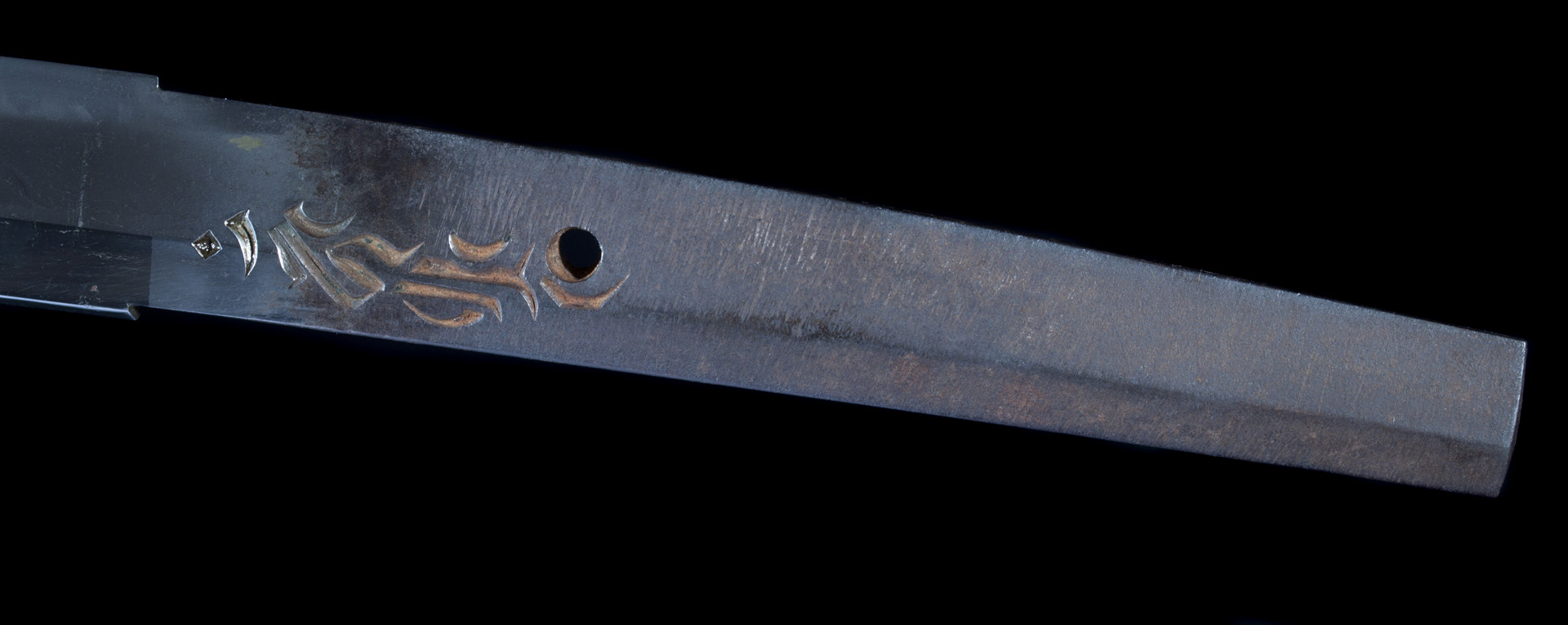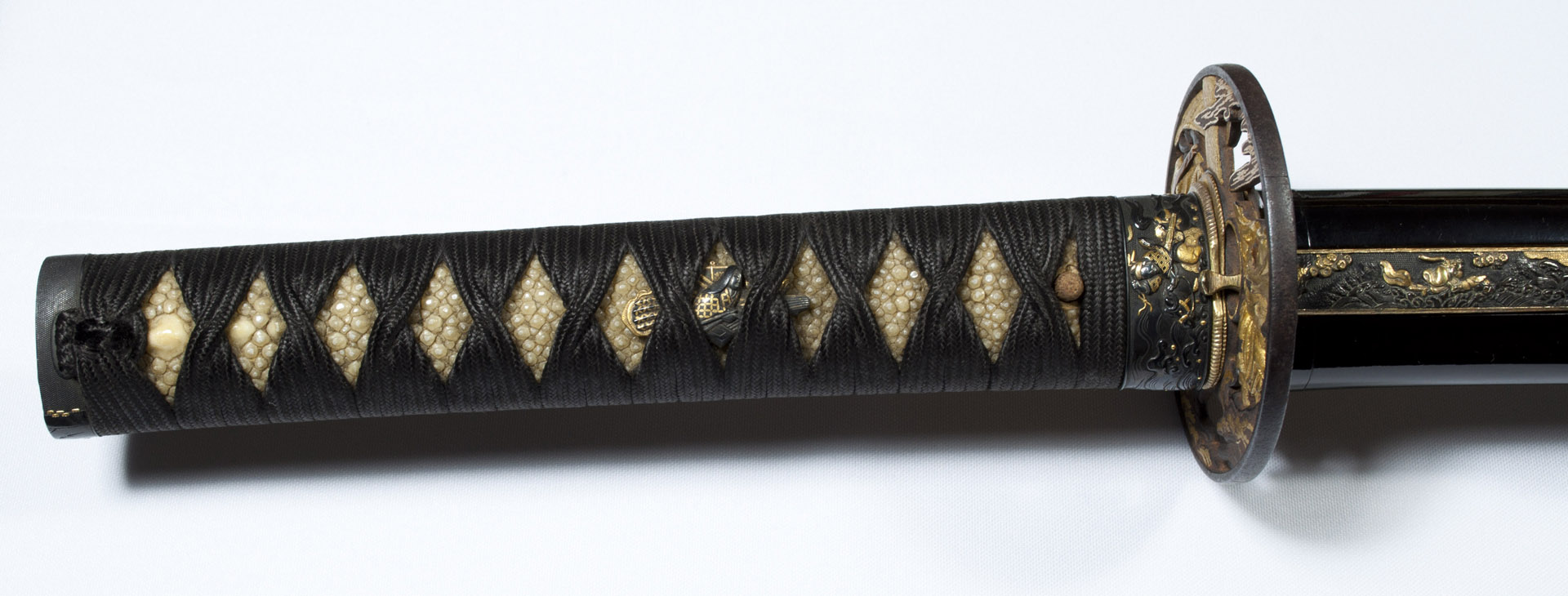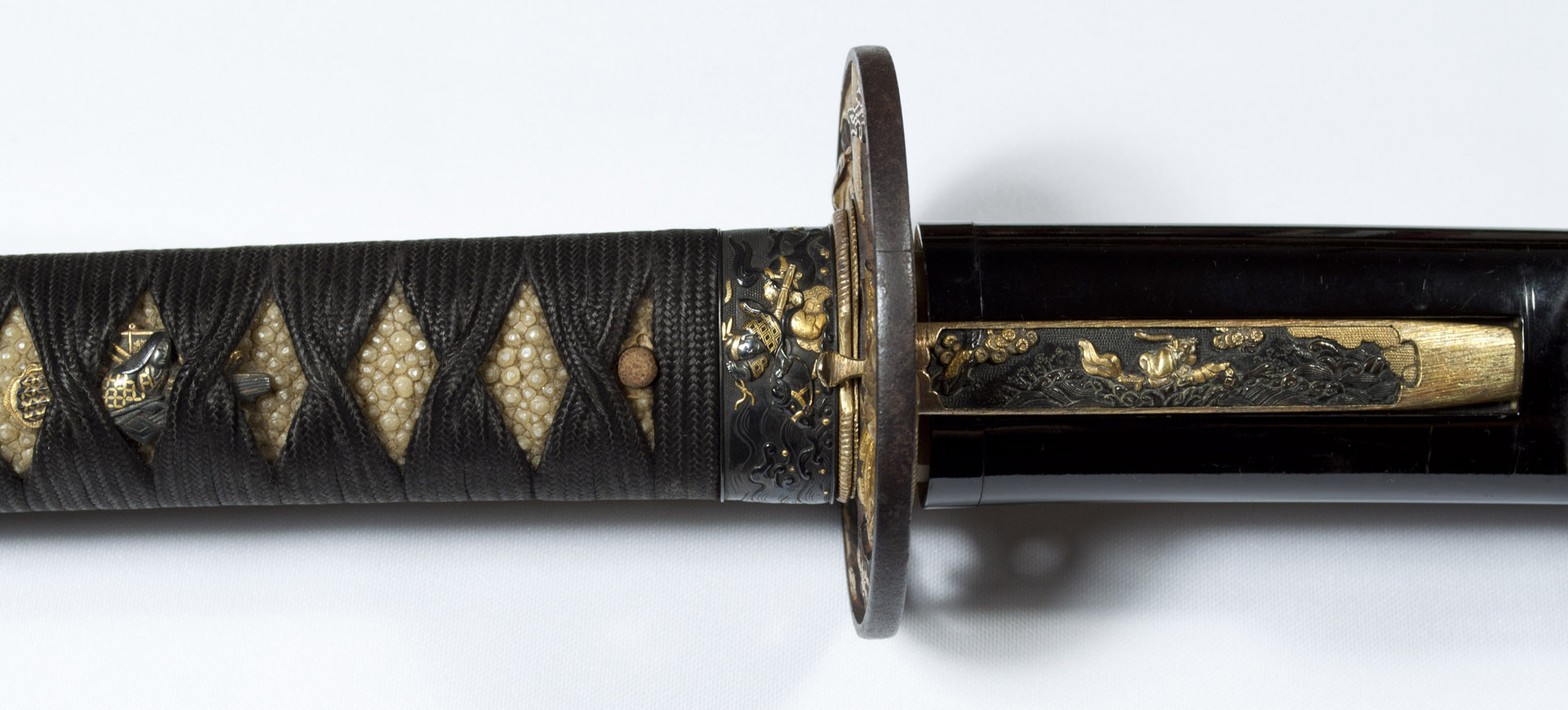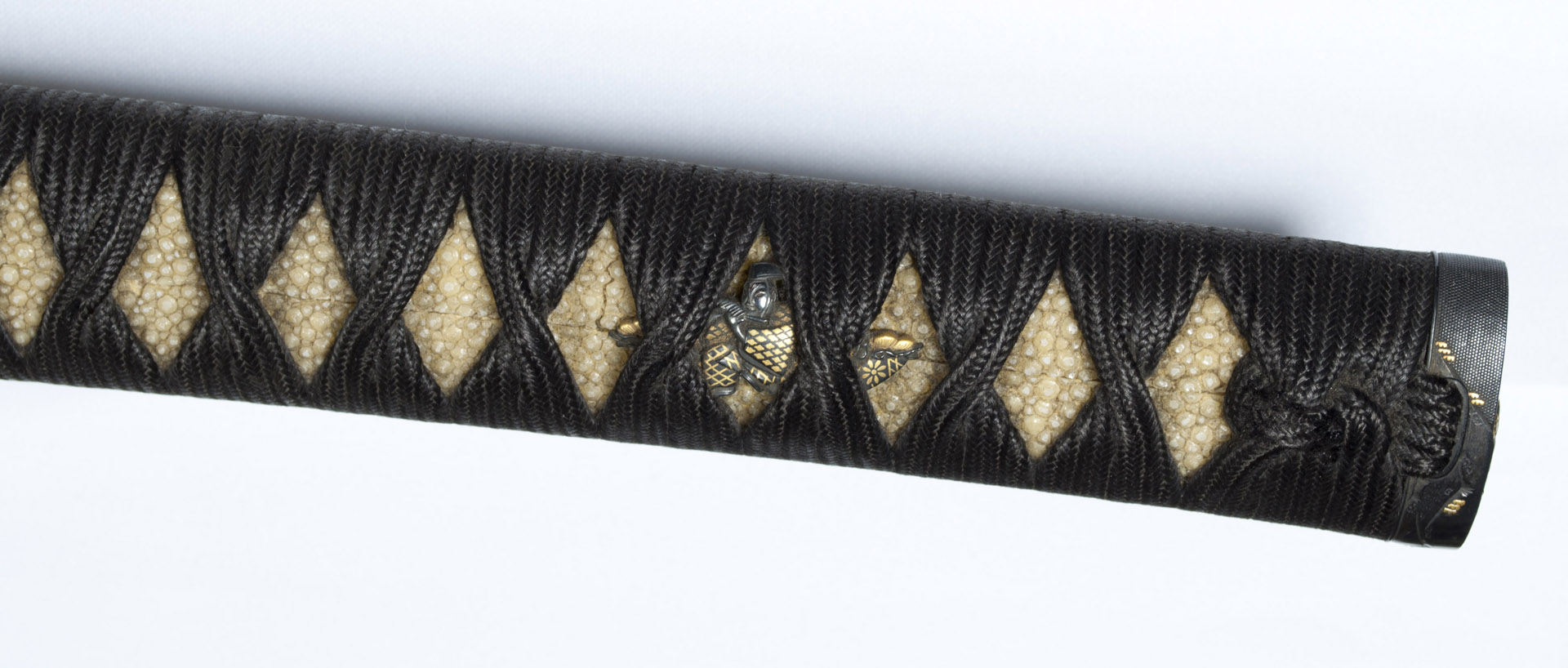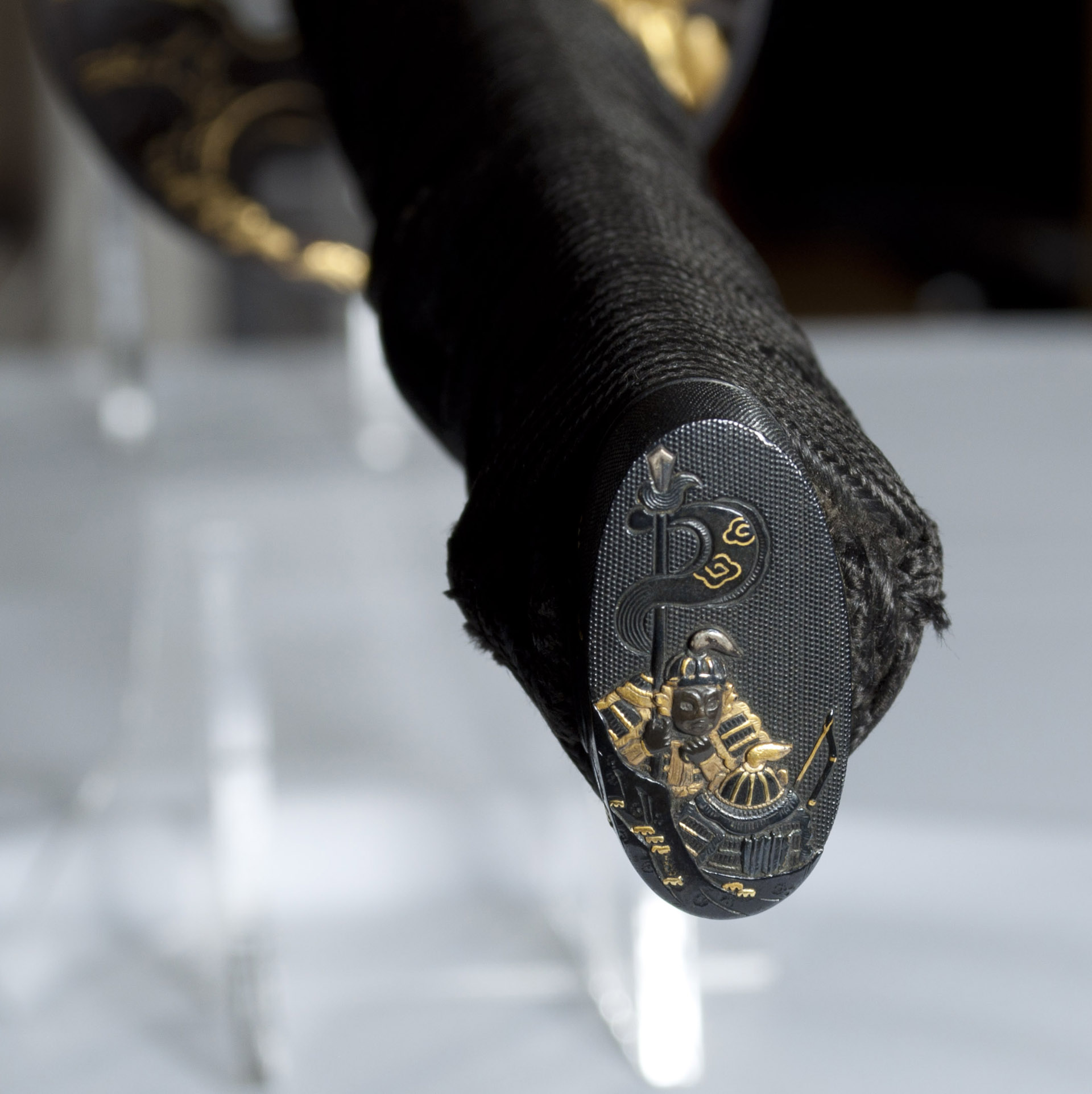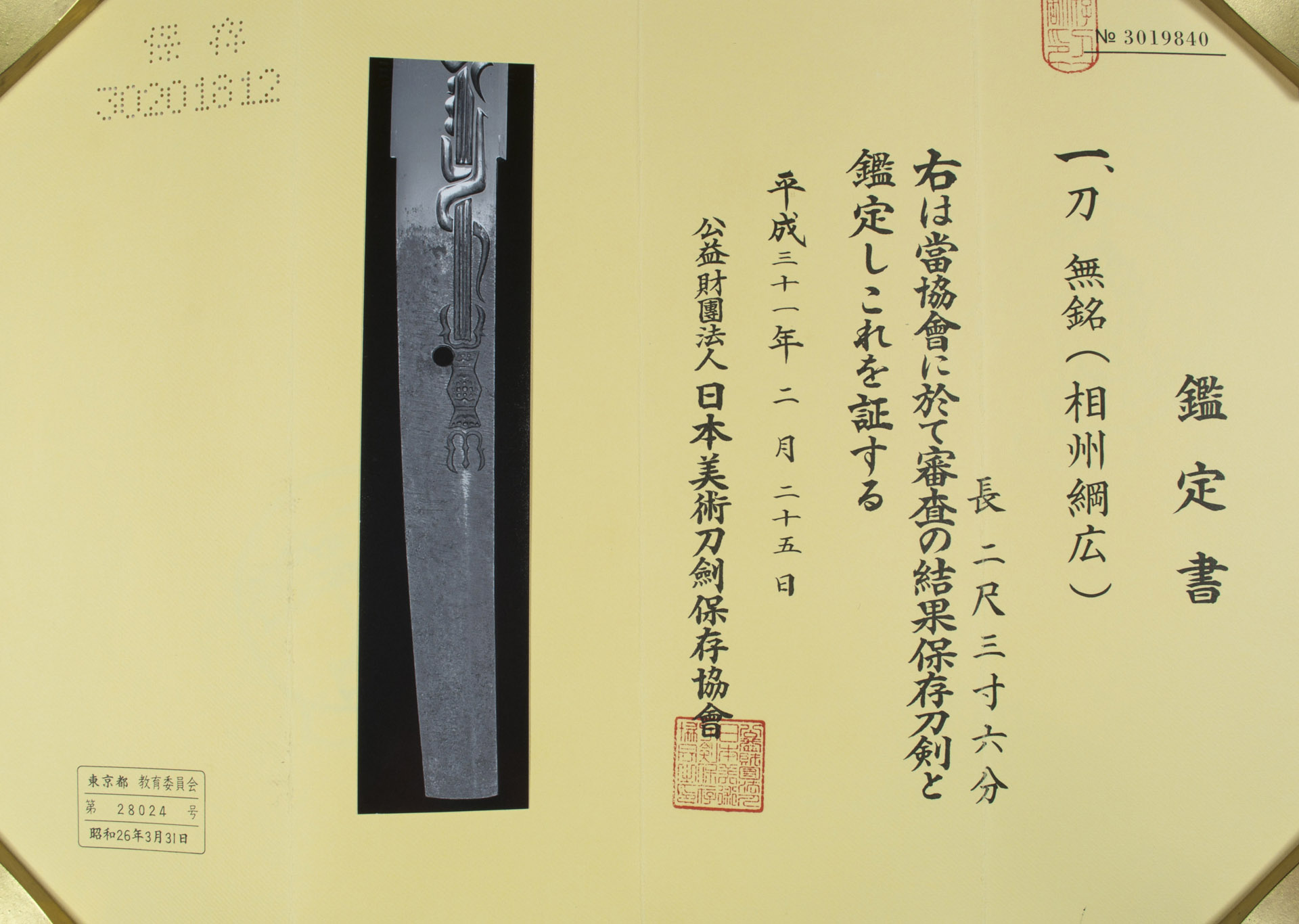Katana Soshu Tsunahiro – 相州綱広
Koto – Muromachi Period – 1532
Province of Sagami
Name of school: Sagami Sue Soshu (« Sue » refers to « Sosho den » production during Muromachi)
Niedeki hamon in gunome midare dotted with tobiyaki giving a rather marked hitatsura appearance. Beautiful activity with strong presence of kinsuji, ashi …
The kitae is in itame with moku elements and a very dense ji nie forming chikei.
The sugata is typical of this school. An important kasane (which has been totally preserved, rare for a koto blade), a marked sori that gives this blade an excellent balance, a mitsu-mune and a chû-kissaki.
The horimono are of quality and well mastered. They represent a sô no kurikara (stylized dragon coiled around a ken) and bohi (throat) on the omote face and two bonji and a bohi on the ura face.
The meaning of the first bonji is « Fudo Myoo », who is the main Buddhist deity and represents Mahavairocana’s irritated form of the mandala of the womb, his counterpart to the vajra mandala being Aizen Myōō; one represents the transmutation of anger, the second of desire.
He is one of the five Myōō, « kings of light, » defenders of the five Buddhas of vajrayāna wisdom. The Buddha he corresponds to is Akshobhya.
The second bonji seems to be a « Rasetsuten », one of the juniten, guardians from all directions. Rasetsuten being the southwestern keeper.
This blade is accompanied by a shirasaya and a beautiful koshirae with kinko elements in shakudo nanako that agree on the theme of warriors and samurai (theme sought and much appreciated by collectors). Gorgeous tsuba from the Tetsugendo school.
Dimensions :
Nagasa = 71,5 cm
Motohaba = 3,10 cm
Motokasane = 0,8 cm
Fujishiro rank : Koto Josaku
Yamada rank : Ryowazamono
NBTHK Hozon certificate
Sōshū-den is one of the five Japanese forge traditions named « Gokaden » during the Koto period (late Heian era to early Momoyama). It is illustrated by several blacksmiths of the foreground in the history of the Japanese sword (Masamune, Sadamune, Go Yoshihiro, Kunimitsu, Kunihiro …) and inspired the greatest blacksmith artists of all times.
Yamamura Tsunahiro was considered the best and most influential blacksmith in Sue Soshu. He was active in the Tenmon era (1532-1555), and his first signature was « Masahiro » which he changed to « Tsunahiro » when he worked for Hojo Ujitsuna of the Go-Hojo clan, one of the clans of warriors the most powerful of the Sangoku period (1477-1573).
As can be seen here, the quality of his work is remarkable. He also excelled in engraving and many are his blades that include horimono. This sword is therefore a perfect example of what Tsunahiro was able to achieve: a true work of art.
Sold






